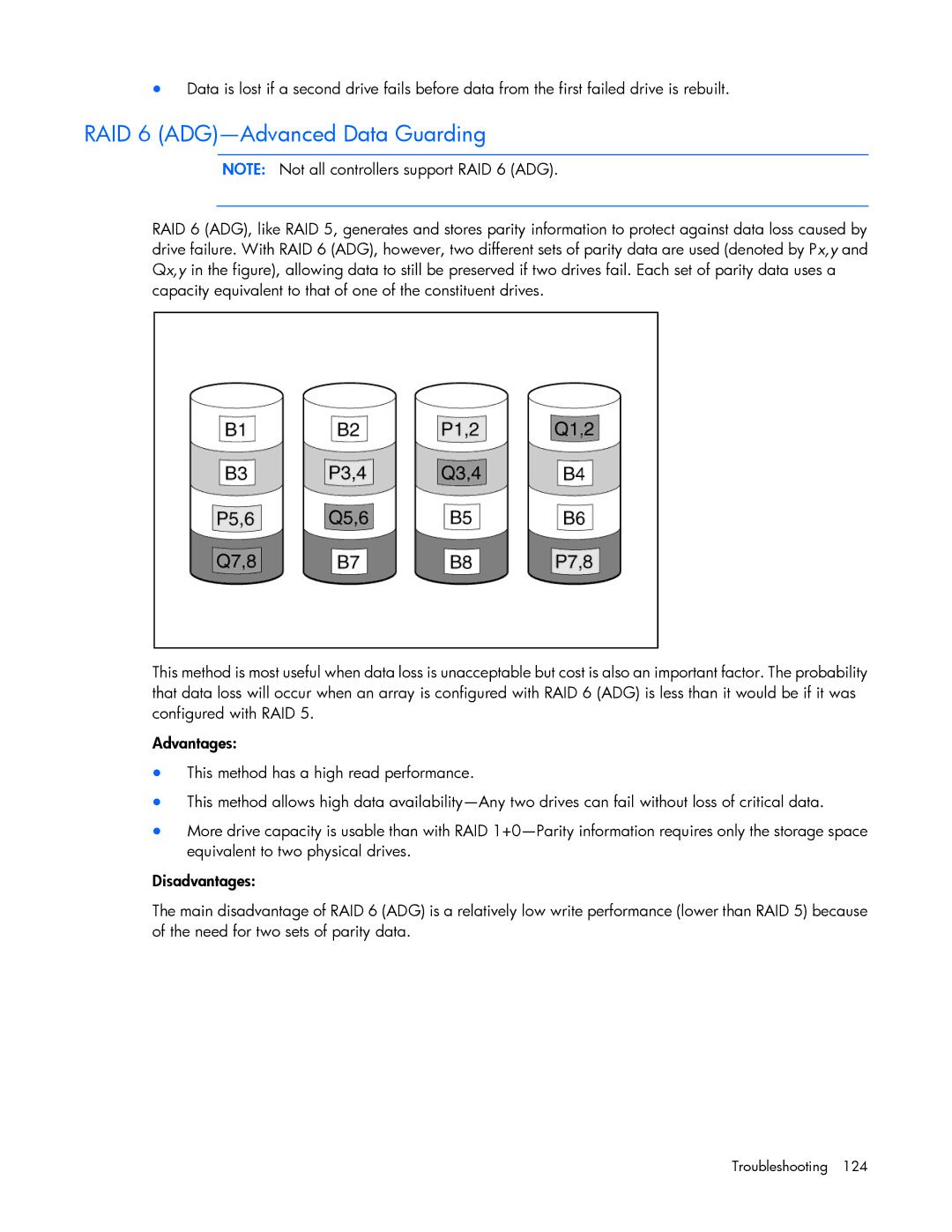
•Data is lost if a second drive fails before data from the first failed drive is rebuilt.
RAID 6 (ADG)—Advanced Data Guarding
NOTE: Not all controllers support RAID 6 (ADG).
RAID 6 (ADG), like RAID 5, generates and stores parity information to protect against data loss caused by drive failure. With RAID 6 (ADG), however, two different sets of parity data are used (denoted by Px,y and Qx,y in the figure), allowing data to still be preserved if two drives fail. Each set of parity data uses a capacity equivalent to that of one of the constituent drives.
This method is most useful when data loss is unacceptable but cost is also an important factor. The probability that data loss will occur when an array is configured with RAID 6 (ADG) is less than it would be if it was configured with RAID 5.
Advantages:
•This method has a high read performance.
•This method allows high data
•More drive capacity is usable than with RAID
Disadvantages:
The main disadvantage of RAID 6 (ADG) is a relatively low write performance (lower than RAID 5) because of the need for two sets of parity data.
